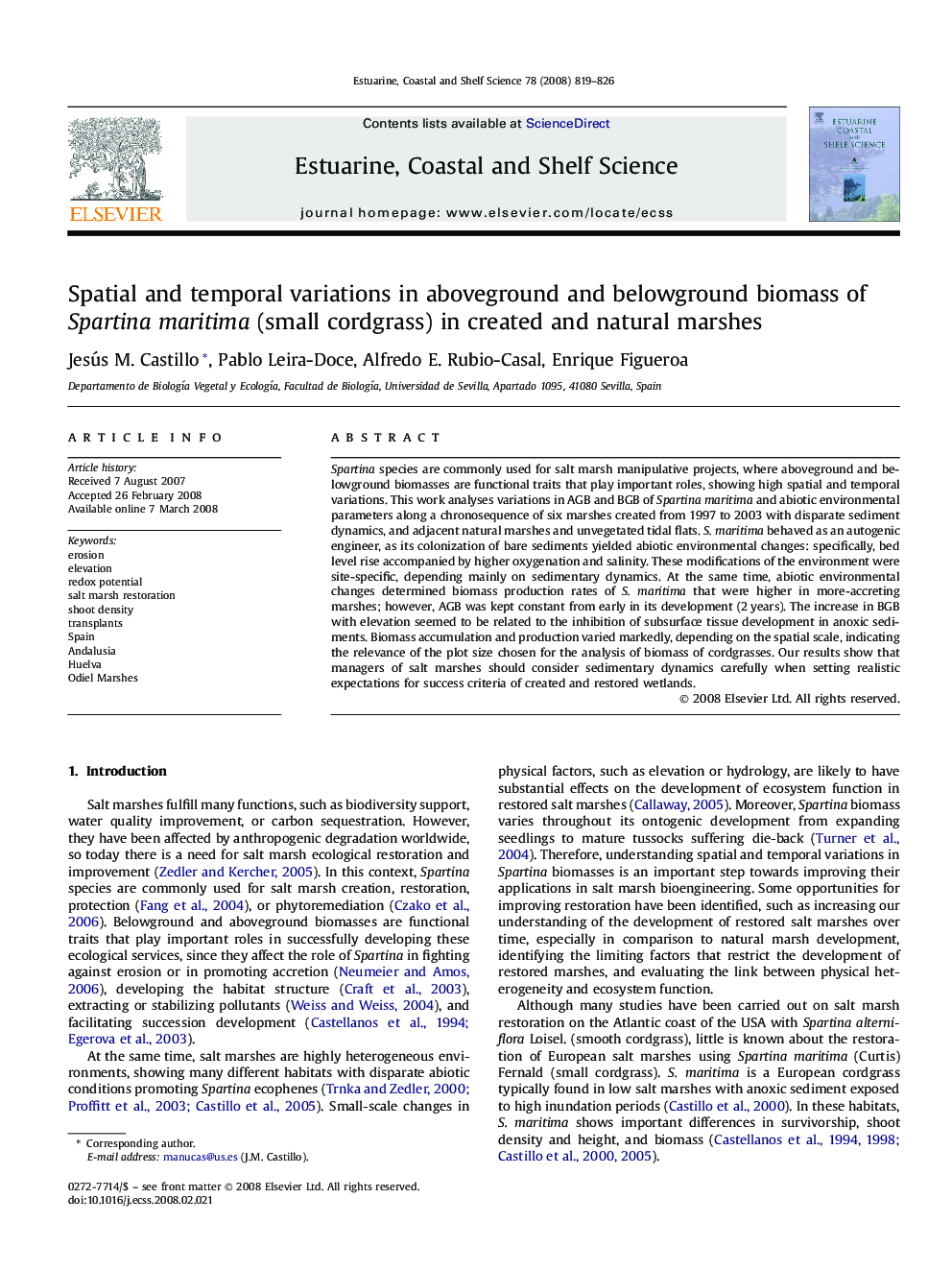| Article ID | Journal | Published Year | Pages | File Type |
|---|---|---|---|---|
| 4541633 | Estuarine, Coastal and Shelf Science | 2008 | 8 Pages |
Spartina species are commonly used for salt marsh manipulative projects, where aboveground and belowground biomasses are functional traits that play important roles, showing high spatial and temporal variations. This work analyses variations in AGB and BGB of Spartina maritima and abiotic environmental parameters along a chronosequence of six marshes created from 1997 to 2003 with disparate sediment dynamics, and adjacent natural marshes and unvegetated tidal flats. S. maritima behaved as an autogenic engineer, as its colonization of bare sediments yielded abiotic environmental changes: specifically, bed level rise accompanied by higher oxygenation and salinity. These modifications of the environment were site-specific, depending mainly on sedimentary dynamics. At the same time, abiotic environmental changes determined biomass production rates of S. maritima that were higher in more-accreting marshes; however, AGB was kept constant from early in its development (2 years). The increase in BGB with elevation seemed to be related to the inhibition of subsurface tissue development in anoxic sediments. Biomass accumulation and production varied markedly, depending on the spatial scale, indicating the relevance of the plot size chosen for the analysis of biomass of cordgrasses. Our results show that managers of salt marshes should consider sedimentary dynamics carefully when setting realistic expectations for success criteria of created and restored wetlands.
